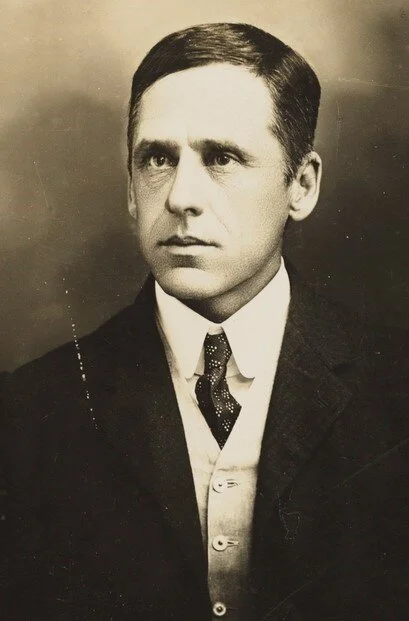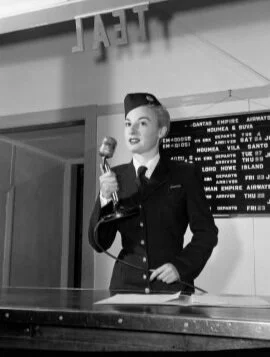Capital history in the news
Ruling on the palace letters
High Court rules palace letters can be released to historian Jenny Hocking | Historian Jenny Hocking has won her High Court bid to access the letters exchanged between then Governor-General Sir John Kerr and the Queen around the time of the dismissal of the Whitlam government. The reasons for the dismissal of the Whitlam government in 1975 have long been debated, and these letters may provide clarity about what the Queen knew about Australia's greatest constitutional crisis.
Jenny Hocking: why my battle for access to the ‘Palace letters’ should matter to all Australians | Professor Jenny Hocking recently won her longstanding campaign for the National Archives of Australia to release the so-called “Palace letters” about the dismissal of Gough Whitlam in 1975. This is her account of that campaign.
Removing or adapting historic statues
Which statue should get the heave ho? | Steve Evans covers the issues of removing historic statues of people who should not be honoured. ANU historian Professor Bruce Scates suggests statues can be adapted to our times and thinking. Article also draws attention to criteria devised by British philosopher David Edmonds that might be used to help decide if statues should be removed.
Reopenings
Galleries, museums ready to reopen | Canberra’s cultural institutions are welcoming the public again. The National Gallery of Australia and National Museum of Australia opened on June 2; the National Library of Australia opened June 3; National Portrait Gallery opened June 6; Australian War Memorial opens 1 July; National Film and Sound Archive opens August 1.
National Museum of Australia and National Gallery reopen to the public | National Gallery of Australia and National Museum of Australia have reopened to the public with strict social distancing restrictions. The Museum will now be able to showcase the landmark Endeavour exhibition looking at the 1770 landing of the Endeavour, helmed by Captain James Cook, which aims to include the views of Aboriginal and Torres Strait islanders as the ship moved along the east coast of Australia.
National Dinosaur Museum reopens with new attractions | The National Dinosaur Museum has reopened with a garden makeover which includes all kinds of new dinosaurs roaming around the museum grounds. With a lot more to see, entry to the garden is no longer free but included as part of the admission price to the museum.
Tiny, odd Zeta joins rarities of an eclectic motoring past | The 1963 Lightburn Zeta is one of four cars that the National Museum of Australia has placed in its atrium for visitors to see. The Zeta was made by Lightburn, a South Australian company which specialised in cement mixers and washing machines. It was a market failure with less than 400 vehicles sold. The oldest car in the collection, the 1913 Delaunay Belleville tourer, is also on display.
MoAD reopens | The Museum of Australian Democracy Old Parliament House re-opened on June 15.
NAA reopens | The National Archives of Australia research centre in Canberra also re-opened on June 15.
CMAG reopens | The Canberra Museum and Gallery reopened on June 10.
More reconciliation news
More Reconciliation Day resources | The ACT Government Reconciliation Day website provides details of the pledge Canberrans can make to demonstrate their support and commitment towards reconciliation. Included here are Learn & Grow Workshops focussed on how First Nation’s people cared for the land and traditional knowledge of bush tucker. See also the Discover page for resources to support learning about the histories and cultures of the First Nation’s peoples.
Signs unveiled in Haig Park highlight Ngunnawal connection to country | On June 2, five signs aimed at reminding visitors of the Ngunnawal people’s connection to country were unveiled at Haig Park, Turner. A sign at the Lonsdale Street entrance depicts the United Ngunnawal Elders Council (UNEC) charter. The other signs designed by elder Wally Bell explain the cultural importance of national landmarks in Canberra.
Memorial for Indigenous service wins ACT's top architecture prize | The sculptural pavilion at the Australian War Memorial commemorating the military service and experiences of Aboriginal and Torres Strait Islander peoples, For our Country, has won the highest award at the 2020 ACT Architecture Awards.
Live at the Museum - Old Masters: Australia's Great Bark Artists | The National Museum of Australia as part of National Reconciliation Week 2020, included on their YouTube channel a conversation with Senior Indigenous Fellow Margo Neale about the impact of the National Museum’s 2014 exhibition, Old Masters: Australia’s Great Bark Artists. This includes a short video showing barks by Tom Djawa, a senior ceremonial leader and artist of the Gupapuynu clan and his son Dr Joe Neparrija Gumbula speaking about his father’s legacy. Warning: Viewers should be aware that this video includes the names and images of deceased people that may cause sadness or distress to Aboriginal and Torres Strait Islander people.
How embroidery helped Pat Sullivan survive the war | Claire Hunter of the Australian War Memorial writes about Aboriginal servicemen Pat Sullivan who took up embroidery while imprisoned by the Japanese at Changi. The Memorial holds several examples of Pat’s embroidery and are part of an extensive collection of his artworks, photographs, and personal effects.
How will we remember COVID-19?
Dear Australia project | Australia Post and National Archives of Australia have teamed up to create the Dear Australia project to help preserve our memories of living through the COVID-19 Pandemic. A national letterbox has been set up where, from now until 18 August, you can write a letter to share your experience of the COVID-19 pandemic which will be preserved by the National Archives for future generations.
Great Depression a daily grind | Michael McKernan writes about how Australians experienced the misery of the Great Depression roughly from October 1929 to possibly 1939. He highlights that governments at that time, unlike governments today, lacked the courage and imagination required to protect people from the economic decline.
Asian-Pacific history
5000 rare and unique maps are now available online | Over 5,000 unique maps from the Asia-Pacific Map Collection are now available online as part of an ongoing project by the Australian National University's College of Asia and the Pacific. The collection is home to a variety of topographic, cadastral, aeronautical, and thematic maps, some of which date back hundreds of years.
Asia illiteracy | Edward Aspinall a researcher of Southeast Asian politics at the ANU writes about the National Library of Australia downgrading its important and highly-regarded Asian collection because of funding cuts. He argues that the Library’s inward focus does not align with the Government’s stated commitment to build knowledge of Asia and promote engagement in the region.
Climate History Australia
Records reveal new trends in Australian temperature extremes | Climate History Australia based at the ANU, have worked with other researchers to develop Australia's longest daily temperature record, identifying a decrease in cold extremes and an increase in heatwaves since 1838. This was done using hundreds of historical newspapers and documents to reconstruct the impact of past temperature extremes. For more information on the study and citizen science programs, see the Climate History Australia website here.
Capital women
Eden Monaro finally gets to show its feminine side | “Yesterdays” columnist Nichole Overall writes about the long journey of women to represent the seat of Eden-Monaro which is likely to end with the upcoming by-election. Fiona Kotvojs, the Liberal candidate who is re-contesting the seat was the first woman to run as a Liberal in the seat in 2019 and Kristy McBain is the first Labor woman in the seat’s 119-year history.
More local history
Les Dwyer was a prolific photographer who captured some of Canberra's seminal moments | Nick Swain’s profile of Les Dwyer who provided Canberra’s first complete photographic service and possibly the longest running. Les opened his photographic stall in Manuka in 1929 and ran the business for 33 years until his death in 1962. During this time, he was a participant in and a recorder of Canberra’s growth. Nearly 2,500 of his images are held by the National Library of Australia who are continuing to document his photographs so they are more readily accessible.
Monaro treasure gets makeover | Tim the Yowie Man writes about the 1841 Squatters Arms at Bunyan, 7 kilometres north of Cooma. Newish owners Raelene Forbes and Marshall Sanderson have been revitalising the old inn and turning part of the property into a B&B. The Old Kitchen at Historic Squatters Arms is on Airbnb.
Once-in-a-century book
Kosciuszko the arc of the park | Another Tim the Yowie Man article. This one draws attention to what Tim considers a once-in-a-century book — Kosciuszko: A Great National Park. Authored by conservationist Dr Graeme Worboys and alpine historian Deirdre Slattery this new book examines the history — and the people who made Kosciuszko one of the great national parks of Australia and the world.
Acknowledgement: The Queen’s portrait above comes from the State Library of Victoria. It was taken in 1952 by an unknown photographer and is a copy glass negative of an engraving from the "Illustrated London News". Further details here. Now that Professor Jenny Hocking has won her longstanding campaign for the release of the Palace letters lingering questions about the role of the Queen in the 1975 dismissal of the Whitlam Government may be about to be answered.
Please share. Let’s get the past and present talking.





